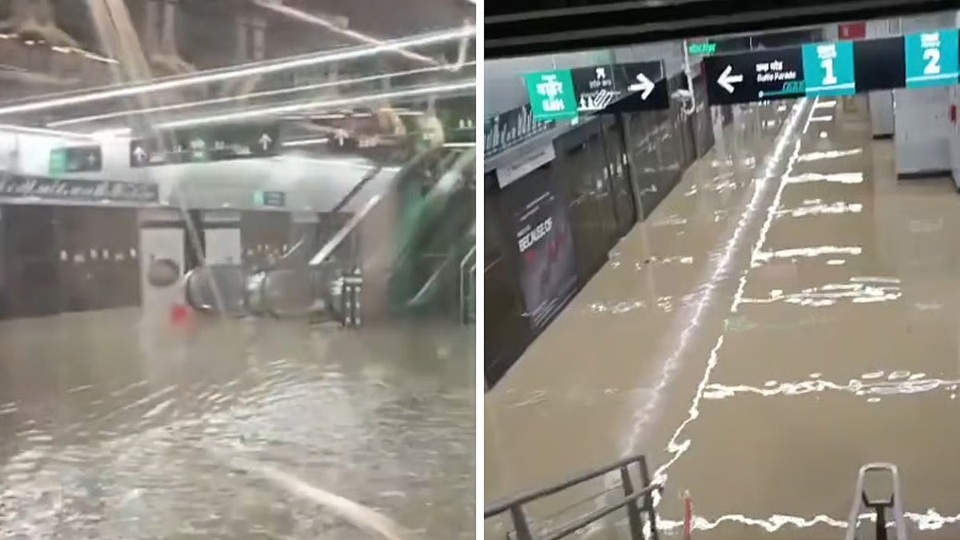Mumbai Metro Line 3: A Brief Overview
The Mumbai Metro Line 3, known as the Aqua Line, is the city's first fully underground metro corridor. Designed to ease congestion on Mumbai's road and rail networks, the 33.5 km line runs from Colaba in the south to SEEPZ in the north, with 27 stations along the route. The project is being executed by the Mumbai Metro Rail Corporation Ltd (MMRCL) and is partly funded by the Japan International Cooperation Agency (JICA).
The first operational phase, covering the 12.5 km stretch from Aarey to Bandra Kurla Complex (BKC), began on March 26, 2024. The second phase, extending service to Worli, was inaugurated on May 9, 2025, with public services commencing the following day.
Flooding at Worli Station: What Happened?
Just 17 days after its public opening, on May 26, 2025, Worli Station was inundated following Mumbai's first major monsoon downpour. The floodwater entered the station due to the collapse of a concrete wall near a utility duct, allowing stormwater from a nearby drain to seep in.
The incident disrupted metro services between Acharya Atre Chowk and Worli, impacting nearly 24,000 commuters that day. While the line's operational stretch between Aarey and BKC remained unaffected, the event has sparked public criticism and raised questions about the preparedness and resilience of Mumbai's underground metro system.
Public and Administrative Reactions
Authorities from the MMRCL emphasized that the flooding occurred in a construction area and not in a fully commissioned operational zone. They assured that the affected section would remain closed until complete safety was guaranteed. Still, the optics of a newly opened station flooding so quickly did not sit well with the public.
Civic activists and urban planners have called for audits of waterproofing, drainage design, and emergency response mechanisms. Social media platforms were flooded with memes and criticism, sarcastically renaming the Aqua Line as the "actual water line."
Other Cities, Similar Stories
This isn’t the first time an Indian metro has faced water ingress issues:
Delhi Metro's Bhikaji Cama Place station was flooded days before its 2018 launch due to poor drainage.
Chennai Metro has experienced minor seepages during cyclonic storms but has largely managed them with heavy-duty pumping systems.
Internationally, New York and London have invested significantly in flood defenses, including sensor-driven water pumps, barriers, and floodgates.
Flood Management Measures Underway
In response to the incident, MMRCL and BMC (Brihanmumbai Municipal Corporation) are exploring or implementing several flood mitigation strategies:
Enhanced Waterproofing: Immediate inspection and reinforcement of all under-construction and operational zones.
Sump Pumps: Installation of high-capacity automated sump pumps with backup generators.
Flood Barriers: Graded and elevated station entrances with automatic floodgates.
Sensor Systems: Real-time water level sensors and humidity monitors to detect seepage early.
Stormwater Coordination: Integration with BMC's broader monsoon action plan, including underground water retention tanks like the one near Milan Subway, capable of storing 30,000 cubic meters of water.
A Wake-Up Call for Resilient Urban Planning
The Worli station flooding incident is not just a technical failure but a symbolic one. It underscores the urgency of climate-resilient urban infrastructure, especially in cities like Mumbai that face annual monsoon disruptions.
As the city continues to build vertically and underground, long-term sustainability and safety must be integral to the design and execution phases. Mumbai Metro Line 3 is a milestone project for India’s public transport evolution. It must now also become a benchmark for climate resilience, not just capacity expansion.
Conclusion
The flooding at Worli station is a timely reminder that even the most advanced infrastructure projects can falter without rigorous planning, robust implementation, and adaptive maintenance strategies. With climate change intensifying rainfall patterns, it’s no longer a question of if but when these systems will be tested. Mumbai must be ready.
